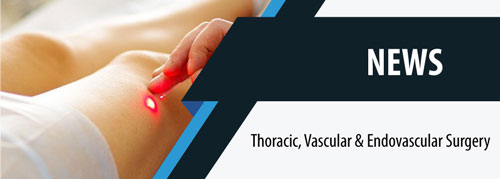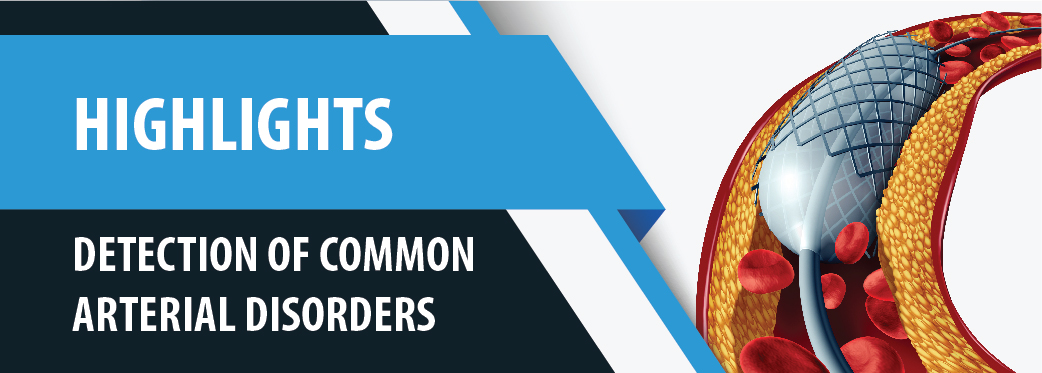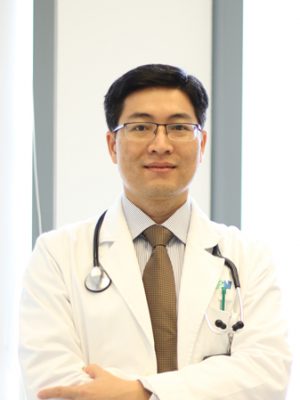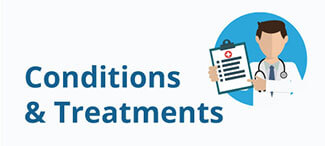
Thoracic, vascular & endovascular surgery at FV hospital is providing diagnosis & treatment of diseases relating to organs of the chest, arteries and veins.
Thoracic surgery can include a variety of operations in the chest to treat diseases such as lung cancers, pneumothorax, thyroid benign nodule, ribs fracture, pectus excavatum… by using open or laparoscopic procedure
Vascular diseases affect different parts of the body and can be categorised as those affecting the arteries (blood vessels carrying blood away from the heart) and those affecting the veins (blood vessels carrying blood to the heart).
Diseases affecting the arteries are typically associated with the thickening of the artery walls due to the deposit of fats. This may cause blockages of the affected vessels resulting in a decreased blood supply to the organs or parts of the body supplied by these vessels. Depending on which parts are affected, these blockages may cause stroke (due to the stenosis of carotid arteries), aneurysm (weakening of the aorta wall which can rupture and cause death), intermittent claudication (muscle pain on walking), gangrene, or organ failure.
Diseases affecting the veins include varicose veins, which are dilated, engorged veins in the legs which can be painful and cause ulcers in the legs which do not heal; and deep vein thrombosis, which is when blood clots form in the veins. These blood clots may move to the lung, get stuck in the lung arteries and cause a life-threatening pulmonary embolism.
In our aging population, cases of vascular disease or disease of the blood vessels are on the rise and are common causes of disability and death. The good news is that the scope of diagnostic tests and treatment is also increasing.
Patients with vascular diseases are treated by multi-disciplinary teams comprising vascular surgeons, phlebologists (specialists in the treatment of veins) and radiologists.
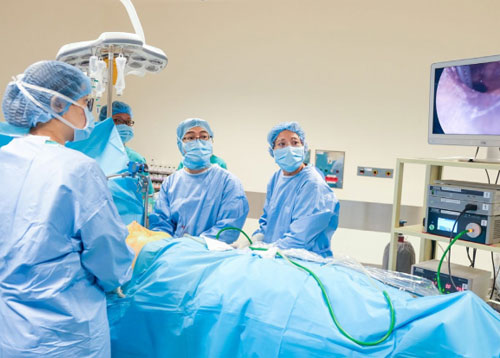
At FVH, we employ several non-invasive vascular investigations – tests to assess the circulation without the need for injections, harmful radiation or other unpleasant interventions. We utilise sophisticated technology to ensure a high degree of diagnostic accuracy. The most effective is ultrasound, which provides images of the blood vessels (using B mode scans) or detailed information about blood flow disturbances (using Doppler scans). These two functions can be combined (Duplex scan) to provide a more comprehensive assessment.
The AMI Omron VP-1000 plus, made in Japan, is a non-invasive device used to assess the risk of heart conditions. The ABI Omron VP-1000 plus measures brachial ankle pulse wave velocity and the ankle brachial pressure index (bapWV, ABI, TPI) to screen for stenosis or occlusion of the extremity arteries.
The system can be used to measure and comprehensively assess diabetes-related vascular and nerve damage to the feet.
When necessary, we employ invasive vascular investigations to diagnose vascular diseases, the most important of which in is angiography. X-ray images of the arteries or veins are taken after a radio-opaque contrast medium has been injected into the blood vessels. Digital systems enhance these images and improve the accuracy and safety of this investigation. Other imaging investigations include CT scans (computerised tomography), radio-isotope angiography and MRI (magnetic resonance imaging).
Vascular surgery is carried out to repair blood vessels in all parts of the body except in the heart and brain. These can be done in an open surgery or during closed (“endovascular”) procedures via catheters inserted into the arteries through incisions in the skin. Open vascular surgical reconstruction techniques include direct repair by suturing (stitching), endarterectomy (removing the plaque that is blocking the vessel), a bypass (using patient’s own vein or a tube graft made of artificial material) and implants (prosthesis). Endovascular procedures include angioplasties and stenting.
Treatments for varicose veins include endovenous thermal closure by laser ablation or radiofrequency, sclerotherapy and phlebectomy.
Thoracic surgery treatment:
- Lung cancer or other mediastinal tumor (neuroma, thymus, thyroid etc…) via thoracoscopy
- Thyroid benign nodule/ cyst by radiofrequency, alcohol: small pain, no scar, dayward
- Pneumothorax: spontaneous or trauma
- Pleurodesis for recurrent pleural effusion (cancer or others causes)
- Hyperhidrosis, Buerger diseases, Raynaud Syndromes by thoracic sympathectomy
- Pectus excavatum/ carinatum repair
- Ribs osteosynthesis for rib fractures
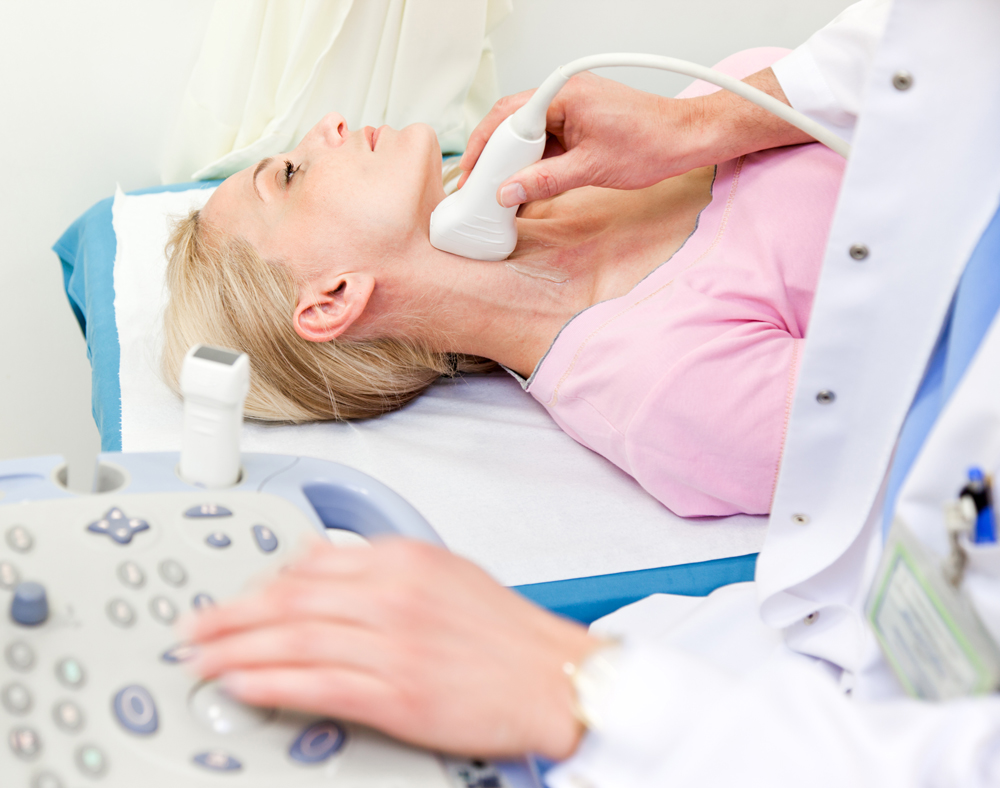
- GE Vivid 3 Ultrasound Machine, GE Logiq9 Ultrasound Machine: One of the most advanced ultrasound machines available.
- Pulse velocity monitor and ankle/brachial blood pressure index (bapWV, ABI) measured by Omron VP-1000 plus, Japan
- Cathlab room with digital subtraction angiography (DSA) via the Allura Xper FD20 X-ray system, made by Phillips.
- C-Arm OEC Elite from GE, which photographs the monitors and not the c-arm itself
- Complete imaging support, including a 1.5 Tesla MRI and 256-slice CT scanner
- Specialised operating table for surgery and vascular intervention, covered with carbon fibre.
- Microscopy system for vascular and neurological microsurgery
- Treatment of varicose veins by Ceralas E Laser of Biolitec AG, Angiodynamic laser of Angiodynamic ( USA), ClosureFast™ RFA system by Medtronic, USA.
No results found...


